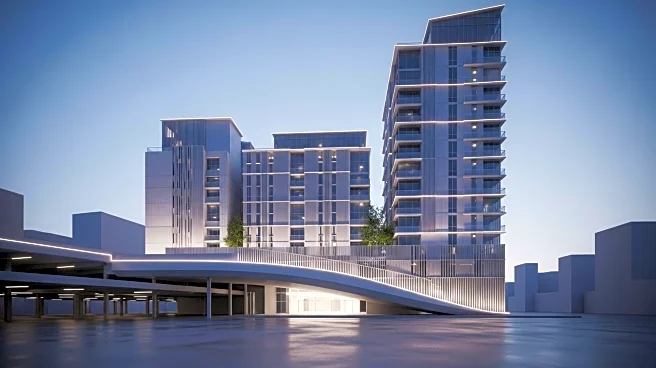What's Happening?
California is experiencing a significant surge in apartment construction, with the Inland Empire and San Diego emerging as hotspots for new builds. According to RentCafe's 2025 Apartment Construction Report, the Los Angeles metro area leads the state with 12,558 units in development, making it the 11th largest builder nationwide. The Riverside metro area, including Riverside and San Bernardino, has more than doubled its new units this year, totaling 6,096. San Diego is also seeing substantial growth, with 4,690 units expected by the end of 2025. Despite California's high rental population, the state's construction accounts for only 8% of the 506,353 units projected nationwide by year-end.
Why It's Important?
The increase in apartment construction in California is crucial for addressing the state's housing shortage, particularly in high-demand areas like the Inland Empire and San Diego. This development could help stabilize rent prices, which have been rising rapidly, especially in the San Francisco Bay Area. The construction boom is also indicative of economic growth and job creation in these regions. However, the disparity in construction rates across different areas highlights ongoing challenges in meeting housing demands statewide. The report suggests that increased supply can mitigate rent hikes, offering potential relief to renters in these burgeoning markets.
What's Next?
As construction continues, stakeholders, including developers and local governments, will need to address infrastructure and community planning to support the influx of new residents. The ongoing development may prompt further policy discussions on housing affordability and zoning regulations. Additionally, the impact on local economies and the environment will be closely monitored, as these projects could influence future urban planning and sustainability efforts in California.
Beyond the Headlines
The construction surge in California reflects broader national trends, with the South leading in new apartment builds due to its status as a 'migration magnet.' This shift underscores the importance of regional economic policies and the need for strategic planning to accommodate population growth. The report also highlights the connection between supply growth and rent stabilization, suggesting that increased construction could be a viable solution to housing affordability issues.













